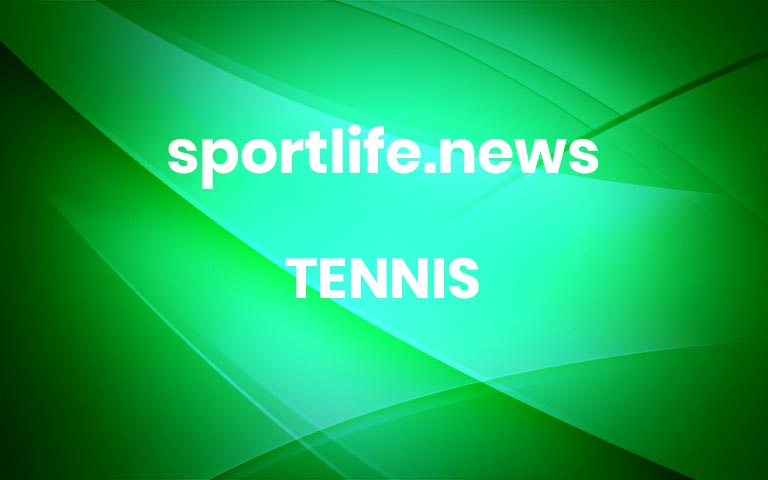The Agony of Playing Carlos Alcaraz and Novak Djokovic at the French Open
Little-known players learned humbling lessons when they drew Carlos Alcaraz and Novak Djokovic in the first round of the French Open.Aleksandar Kovacevic did plenty of tossing and turning Sunday night before finally settling in for what he thought was about six hours of restless sleep.He had good reason to be nervous. Kovacevic, who is 24 years old and the world’s 114th-ranked player, had a noon tennis date in the first round of the French Open with Novak Djokovic, the winner of 22 Grand Slam singles titles.The only person with a more daunting assignment perhaps was Flavio Cobolli of Italy. Cobolli, who is 21 and ranked 159th, survived the qualifying tournament last week, only to be rewarded with an opening-round confrontation with Carlos Alcaraz.It didn’t go so well for either of the unknowns.Nine games and roughly 35 minutes into Cobolli’s match, an Alcaraz forehand sailed long and Cobolli let out a scream, swung his racket in celebration and let a smile spread across his face. He pumped his fist to the crowd as he walked to his chair. He had finally won a game against the best player in the world, who was playing like, well, the best player in the world.“I did the best I could,” Cobolli said.Alexsandar Kovacevic grew up idolizing Novak Djokovic, who defeated him in three sets on Monday.Clive Brunskill/Getty ImagesKovacevic, who lost to Djokovic, 6-3, 6-2, 7-6(1), had a pretty good idea of what that felt like, too, even though he lasted more than two hours on the court with a player he grew up idolizing.“There was some points, passing shots that he hits, and they’re just points where I feel like I had no chance sometimes,” Kovacevic said. “And those are definitely humbling.”It is a truism of tennis that the top players hate playing the first round of a Grand Slam. Anything but a cruise to victory is cause for concern. Also, there is always the possibility of epic failure in the form of a loss to someone few have heard of.Whatever discomfort Djokovic and Alcaraz may have felt walking onto the courts at Roland Garros on Monday, they mostly managed it with ease, especially Alcaraz. He made an early contribution to the tournament highlight reel, curling a backhand around the net post for a winner early in the second set. Djokovic had more of a workout, and even lost his serve late in his match after getting windblown clay in his eyes.It helped that the stars drew opponents with three digits in their rankings whose recent experience didn’t have much in common with their own. Kovacevic had a particularly winding journey to his date on the French Open’s center court with Djokovic.His father, Milan, immigrated to America from Serbia to pursue a doctorate in computer science from U.C.L.A. His mother is from Bosnia and Herzegovina, and Kovacevic grew up on Manhattan’s Upper West Side, about 500 yards from the green clay of the Central Park tennis complex.In ninth grade, he still wasn’t good enough to play singles for Beacon High School, a public school in Midtown, even though he was spending afternoons training at the John McEnroe Tennis Academy on Randall’s Island.Things started to click after he left Beacon to train in Florida while taking classes at home. At a tournament one summer, he played a top junior who was planning to attend the University of Illinois. His opponent told him he should join him at the school, so he did, even though he didn’t have much interest in college. By the time he finished five years later, he was ranked in the low 400s and figured he would give pro tennis a shot.Since then he has mostly been playing in the tennis hinterlands, though he did win a match in the main draw of the prestigious Miami Open in March.“It has not been the most glorious over the last couple of years,” he said.“I’m standing in Chatrier in front of a packed crowd, playing the best player to ever pick up a racket,” Kovacevic said of Djokovic. “It’s something that you got to take in for a second, but also push away and try to focus and play.”Jean-Francois Badias/Associated PressOn Monday, Kovacevic made his Grand Slam debut against Djokovic on the main court at Roland Garros, Philippe Chatrier, though it wasn’t his first time meeting Djokovic.That happened at the U.S. Open when he was 6 and his Balkan-proud parents brought him to watch the 18-year-old Djokovic win an early-round match, long before Djokovic was the player he would become. And two years ago he warmed up Djokovic at the U.S. Open after coming within a point of qualifying to play.He has the pictures to prove it, and he has tried to incorporate elements of Djokovic’s game into his own. His squat as he waits for an opponent’s serve — knees wide, chest up, racket out front — has plenty of Djokovic in it, even if the rest of his game isn’t quite there yet.“Where I am in my career, like it shouldn’t be so crazy to me that I’m playing some of these guys,” he said. “But, you know, the little kid in me, I’m standing in Chatrier in front of a packed crowd, playing the best player to ever pick up a racket. It’s something that you got to take in for a second, but also push away and try to focus and play.”The way Alcaraz has started his career, he may eventually have something to say about who is the best player to pick up a racket. Everyone in tennis knows this, including Cobolli, who has also spent most of his brief career in the sport’s version of the minor leagues.He was in an elevator, still feeling good about qualifying for his first main draw Grand Slam match, when he looked at his phone and saw that his opponent was Alcaraz. He said he closed his eyes, ran his hand through his hair, and thought, “Oh no.”Roughly, three-quarters of an hour into the match, it was going as he dreaded it might. Alcaraz couldn’t miss and later said he felt “invincible,” like he would never lose a game. Cobolli barely had time to breathe between shots.The scoreboard said 6-0, 2-0. “He was playing incredible,” Cobolli said.Cobolli lasted just under two hours against Alcaraz.Anne-Christine Poujoulat/Agence France-Presse — Getty ImagesOn the bright side, there is nothing the French crowd loves more — other than a French player — than rallying behind a player who is getting blitzed. And by the time Cobolli got his legs under him, knotting the third set at 5-5, the crowd of nearly 10,000 on the Suzanne Lenglen court was chanting his name. It was like he was one of their own, especially after he saved three match points and broke Alcaraz’s serve to draw even in the set.“I felt important on the court,” Cobolli said.The final score was 6-0, 6-2, 7-5, the elapsed time 1 hour, 57 minutes.Now that Cobolli has seen up close what the best looks like, he said he understands better what he must do to compete — hit the weight room, he said with a grin as he pushed in at his chest with his hand. And get better at tennis.Hope springs eternal for him as it does for so many of the Kovacevics and Cobollis in the game. Just over two years ago, Alcaraz’s ranking had three digits, too. More



